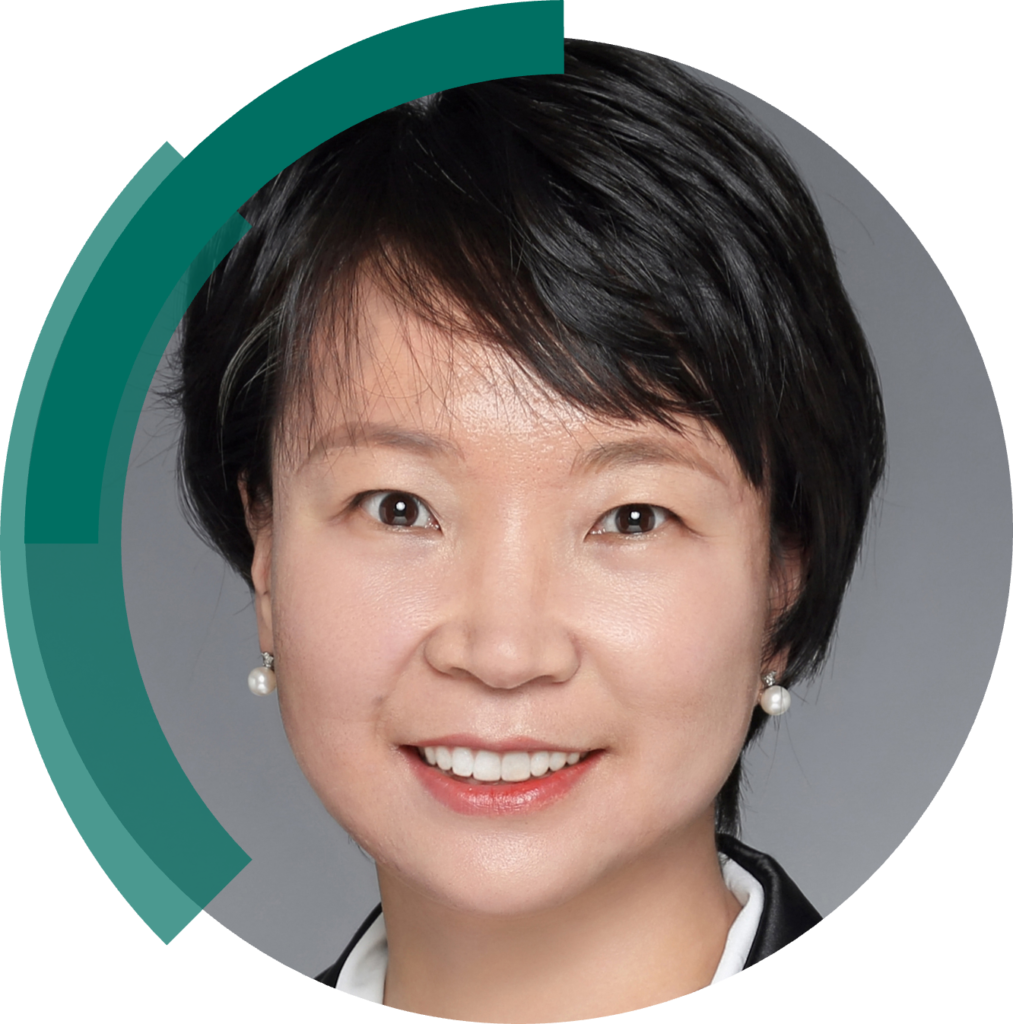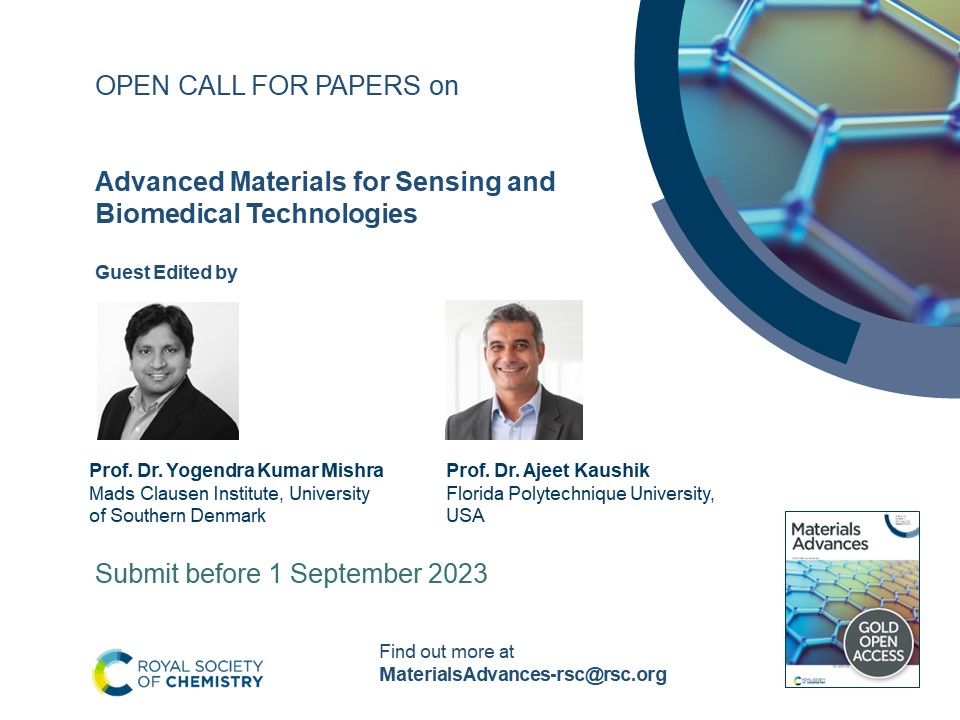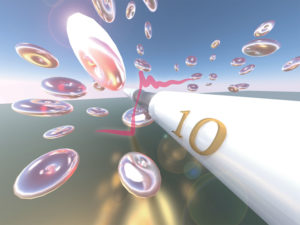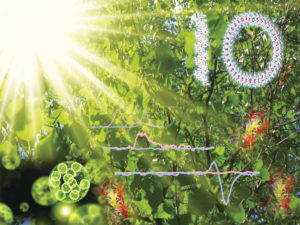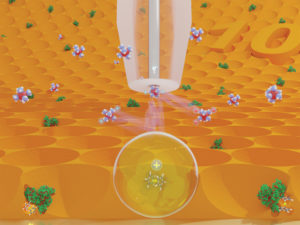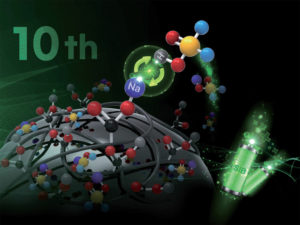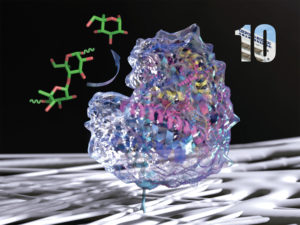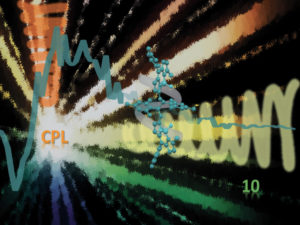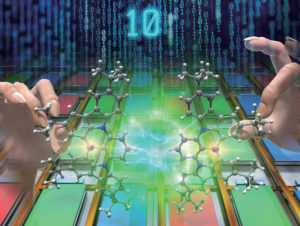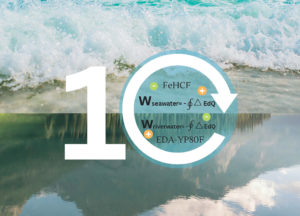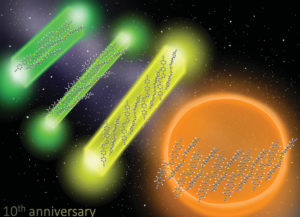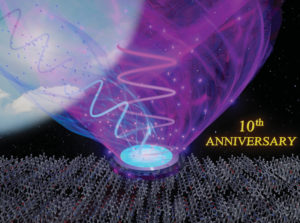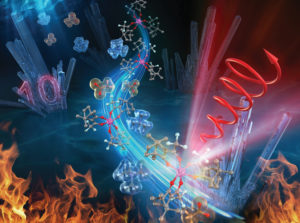This year we are pleased to celebrate 10 years since Journal of Materials Chemistry was split into three respective journals: Journal of Materials Chemistry A, B and C, each focusing on a different aspect of materials chemistry. We are grateful to our fantastic community of authors, reviewers, Board members and readers and wanted to showcase just some of them in a series of ‘Community Spotlight’ blog articles.
In the second of our ‘Community Spotlight’ series, we feature some more of the Advisory Board members who have supported Journal of Materials Chemistry A, B or C over the years and have asked them what they like most about being on the journal’s Advisory Boards and about their recent Journal of Materials Chemistry publications. Check out their interview responses below.
Prof. Magda Titirici
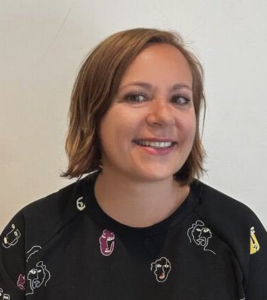 Prof. Magda Titirici is a Chair of Sustainable Energy Materials in the Department of Chemical Engineering at Imperial College London. Her research interests are related to the development of sustainable materials for energy storage and conversion in particular batteries beyond Li ion as well as sustainable electrocatalytic processes for oxygen reduction free of critical metal or biomass oxidation with H2 production. She has served as an Associate Editor for Journal of Materials Chemistry A between 2013-2022. She has published over 300 papers in this area among which > 15 are in J Mater Chem A. She remains currently in the J Mater Chem A advisory board and continues to engage with the materials chemistry community in her role of the President of the RSC Materials Chemistry Community. Prof. Magda Titirici is a Chair of Sustainable Energy Materials in the Department of Chemical Engineering at Imperial College London. Her research interests are related to the development of sustainable materials for energy storage and conversion in particular batteries beyond Li ion as well as sustainable electrocatalytic processes for oxygen reduction free of critical metal or biomass oxidation with H2 production. She has served as an Associate Editor for Journal of Materials Chemistry A between 2013-2022. She has published over 300 papers in this area among which > 15 are in J Mater Chem A. She remains currently in the J Mater Chem A advisory board and continues to engage with the materials chemistry community in her role of the President of the RSC Materials Chemistry Community.
|
What do you like most about being on the Advisory Board for Journal of Materials Chemistry A?
I like being at the forefront of materials chemistry research by being involved in reviewing topical papers, setting new strategies for the journal, suggesting special issues, and indirectly interacting with different scientific topics, especially following on from my previous role as an Associate Editor for J Mater Chem A. I believe that the J Mater Chem family works with the materials chemistry community for the materials chemistry community, and you always feel included as scientist no matter where you work in the world.
What do you think of Journal of Materials Chemistry A as a place to publish impactful materials chemistry research?
J Mater Chem A is indeed the ideal place to publish research in materials chemistry related to green materials, energy and other environmental applications in order to maximise impact and visibility of research. This is due to the journal’s great scientific reputation and the professionalism of to its editorial team. J Mater Chem was one of the first journal I have published in at the very start of my academic career. It has been instrumental for my academic career especially during my early days.
Where do you see the materials chemistry field in the next 10 years?
I believe that theory driven materials discovery using high throughput automatic robots optimised by AI to balance cost performance and sustainability will increase significantly. This is where I see the future of materials chemistry.
Prof. Markus Niederberger

Markus Niederberger is an Advisory Board member for Journal of Materials Chemistry A. He is a Professor of Multifunctional Materials in the Department of Materials at ETH Zurich, Switzerland. He received his diploma in Chemistry and his doctoral degree from ETH Zurich. After a postdoctoral stay at the University of California Santa Barbara he was a group leader at the Max Planck Institute of Colloids and Interfaces. His group is active in diverse research areas ranging from nanoparticle synthesis to aerogels for gas-phase photocatalysis, flexible, transparent and degradable batteries, polymers for corrosion protection and luminescent materials. |
What do you like most about being on the Advisory Board for Journal of Materials Chemistry A?
As an Advisory Board member I often act as adjudicative referee for manuscripts with conflicting reports. I like doing this because it is very instructive for me. I learn about the different views and opinions of experts on certain topics and I have to weigh them carefully so that I can make a sound and fair recommendation.
Where do you see the materials chemistry field in the next 10 years?
It is clear that sustainability will become a focus. However, I also believe that the aspect of rapid implementation of research results in industry and technology will continue to gain in importance, which will strongly influence research and publication activities.
Prof. Ross Forgan
|
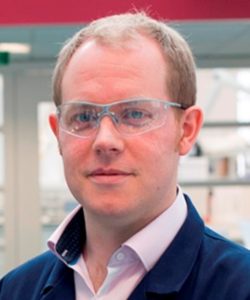
Prof Ross Forgan is an Advisory Board member for Journal of Materials Chemistry B and is a Professor of Supramolecular and Materials Chemistry at the University of Glasgow. His research into the application of metal-organic frameworks in biomimetic catalysis and nanoscale drug delivery is underpinned by fundamental studies into molecular recognition and self-assembly processes inside nanoporous materials. He graduated with a PhD in supramolecular inorganic chemistry, under the supervision of Prof Peter Tasker, from the University of Edinburgh in 2008. A three year postdoctoral position (2008-2011) with Nobel Laureate Prof Sir J Fraser Stoddart at Northwestern University, USA, saw him research organic interlocked molecules, chemical topology and metal-organic frameworks (MOFs). He returned to Scotland in 2011 as a senior research fellow in Prof Lee Cronin’s group at the University of Glasgow, investigating hybrid materials and applications of 3D-printing. After 11 months, he was awarded a Royal Society University Research Fellowship (2012-2021) to begin his independent academic career, with subsequent promotions to Reader in 2016 and Professor in 2019. |
What do you like most about being on the Advisory Board for Journal of Materials Chemistry B?
Having an overview of the wide range of exciting materials research that is being published, building links with others in the field through things like special issues (I am co-editing a special issue for JMC B in 2023), and supporting the younger members of the community through initiatives such as the JMC lectureship.
Could you provide a brief summary of your most recent Journal of Materials Chemistry B publication?
Our most recent publication was a review article on the application of metal-organic frameworks (MOFs) as nanoscale imaging agents led by Dr Fatma Demir Duman. The review covers a wide range of potential imaging applications to which MOFs can be applied, focussing on structure-activity relationships and highlighted the great potential for MOFs to act as multifunctional vectors in nanomedicine.
Prof. Marta Mas-Torrent
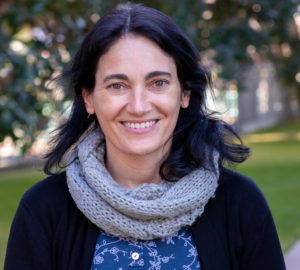 Prof. Marta Mas-Torrent is an Advisory Board member for Journal of Materials Chemistry C. She received her PhD in 2002 working at the Institut de Ciència de Materials (ICMAB-CSIC) in Barcelona (Spain) and at The Royal Institution of Great Britain in London (UK). Afterwards, she carried out postdoctoral research at Kavli Institute of Nanoscience, Delft (The Netherlands). Since June 2007 she obtained a research position at ICMAB-CSIC. In 2012 she was awarded with an ERC Starting Grant project and one year later an ERC-PoC project. She has also participated in many other European and national projects as well as in two industrial related projects. She is co-author of around 190 publications and co-inventor of 7 patents. Prof. Mas-Torrent received the 2013 Oliver Kahn International Award for her contributions in the field of materials science and the Prize of Young Researcher 2006 of the Spanish Royal Society of Chemistry (RSEQ). Currently she is leading an interdisciplinary research group focused on the design and preparation of new functional molecular materials for their application in organic electronic devices. Prof. Marta Mas-Torrent is an Advisory Board member for Journal of Materials Chemistry C. She received her PhD in 2002 working at the Institut de Ciència de Materials (ICMAB-CSIC) in Barcelona (Spain) and at The Royal Institution of Great Britain in London (UK). Afterwards, she carried out postdoctoral research at Kavli Institute of Nanoscience, Delft (The Netherlands). Since June 2007 she obtained a research position at ICMAB-CSIC. In 2012 she was awarded with an ERC Starting Grant project and one year later an ERC-PoC project. She has also participated in many other European and national projects as well as in two industrial related projects. She is co-author of around 190 publications and co-inventor of 7 patents. Prof. Mas-Torrent received the 2013 Oliver Kahn International Award for her contributions in the field of materials science and the Prize of Young Researcher 2006 of the Spanish Royal Society of Chemistry (RSEQ). Currently she is leading an interdisciplinary research group focused on the design and preparation of new functional molecular materials for their application in organic electronic devices. |
Her interests range from fundamental studies in order to better understand materials properties to a more applied perspective aiming at developing proof-of-principle devices. Particularly, she is interested in structure-property correlation studies, surface self-assembly, processing of organic semiconductors, organic field-effect transistors (OFETs), electrolyte-gated organic field effect transistors (EGOFETs), charge transport and sensors.
What do you think of Journal of Materials Chemistry C as a place to publish impactful materials chemistry research?
The J. Mater. Chem. C is a widely read journal among the materials science community and holds a strong and long history. The journal is suitable to publish novel materials, fundamental studies of appealing materials as well as advanced applications. In particular, related to my research field of molecular electronics, I always found here very inspiring works.
Could you provide a brief summary of your most recent Journal of Materials Chemistry C publication?
In my last publication, we report the fabrication of organic field-effect transistors (OFETs) that respond to UV radiation. The OFETs have been prepared using as active layer a blend of an organic semiconductor with different insulating polymers. We show that the nature of the binding polymer has a significant impact on the device performance and photoresponse due to the tuning of the charge traps. Therefore, this work demonstrates that the use of a binding polymer is a useful tool to optimise the OFET electrical characteristics as well as its photoresponsivity.
Prof. Yanlin Song
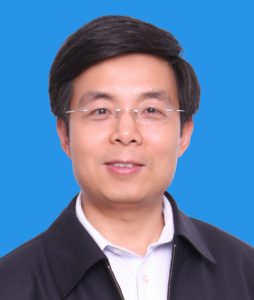 Yanlin Song is on the Advisory Board for Journal of Materials Chemistry C and is a professor and director of Key Laboratory of Green Pringting at Institute of Chemistry, Chinese Academy of Sciences (ICCAS). He received his Ph.D. degree from the Department of Chemistry at Peking University in 1996. Then he conducted research as a postdoctoral follow at Tsinghua University from 1996 to 1998. He has been working at ICCAS since 1998. His research interests include nano-materials and green-printing technology, printed electrics and photonics, fabrication and applications of nanostructured devices. He has published more than 400 papers and 15 books and chapters, with a H-index of 95, and has been granted more than 130 patents from China, USA, European Union , Japan and Korea, etc. Yanlin Song is on the Advisory Board for Journal of Materials Chemistry C and is a professor and director of Key Laboratory of Green Pringting at Institute of Chemistry, Chinese Academy of Sciences (ICCAS). He received his Ph.D. degree from the Department of Chemistry at Peking University in 1996. Then he conducted research as a postdoctoral follow at Tsinghua University from 1996 to 1998. He has been working at ICCAS since 1998. His research interests include nano-materials and green-printing technology, printed electrics and photonics, fabrication and applications of nanostructured devices. He has published more than 400 papers and 15 books and chapters, with a H-index of 95, and has been granted more than 130 patents from China, USA, European Union , Japan and Korea, etc. |
Where do you see the materials chemistry field in the next 10 years?
In the next 10 years, the design and preparation of new molecules and materials will be influenced greatly by Artificial Intelligence, such as DNA Synthesis and Materials Genome, and the disciplinary crossing and integration of Chemistry, Materials and Bioscience will be more and more important and popular.
Could you provide a brief summary of your most recent Journal of Materials Chemistry C publication?
Recently, we have published a review article with the title “Interface engineering of perovskite nanocrystals: challenges and opportunities for biological imaging and detection”. Perovskite nanocrystals (PNCs) have attracted much attention due to their unique optical properties, including high photoluminescence quantum yield, narrow emission and tunable wavelength. This perspective focuses on the recent progress of these promising materials as fluorescent probes for biological diagnosis. Efforts on the interface engineering are presented on how to construct water-resistant and biocompatible PNC probes. Their applications in biological diagnosis are discussed with a focus on cell and tumor imaging, biomolecular detection, and fluorescence immunoassay. With the high tolerance of defect, precisely tunable emission, and strong light absorption coefficient, the physical and optical properties of PNCs are superior to traditional fluorescent dyes. Finally, this perspective discusses the challenges and opportunities for the application of PNCs as fluorescent labeling probes in biological fields.
We hope you enjoyed finding out more about some more of our Advisory Board members. Keep an eye out for our next ‘Community Spotlight’!
If you missed the first of our ‘Community Spotlight’ blog posts, check it out here.
Comments Off on Journal of Materials Chemistry A, B and C 10th Anniversary Community Spotlight: Advisory board












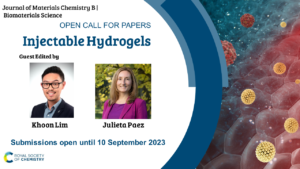





 Yanlin Song is on the Advisory Board for Journal of Materials Chemistry C and is a professor and director of Key Laboratory of Green Pringting at Institute of Chemistry, Chinese Academy of Sciences (ICCAS). He received his Ph.D. degree from the Department of Chemistry at Peking University in 1996. Then he conducted research as a postdoctoral follow at Tsinghua University from 1996 to 1998. He has been working at ICCAS since 1998. His research interests include nano-materials and green-printing technology, printed electrics and photonics, fabrication and applications of nanostructured devices. He has published more than 400 papers and 15 books and chapters, with a H-index of 95, and has been granted more than 130 patents from China, USA, European Union , Japan and Korea, etc.
Yanlin Song is on the Advisory Board for Journal of Materials Chemistry C and is a professor and director of Key Laboratory of Green Pringting at Institute of Chemistry, Chinese Academy of Sciences (ICCAS). He received his Ph.D. degree from the Department of Chemistry at Peking University in 1996. Then he conducted research as a postdoctoral follow at Tsinghua University from 1996 to 1998. He has been working at ICCAS since 1998. His research interests include nano-materials and green-printing technology, printed electrics and photonics, fabrication and applications of nanostructured devices. He has published more than 400 papers and 15 books and chapters, with a H-index of 95, and has been granted more than 130 patents from China, USA, European Union , Japan and Korea, etc.